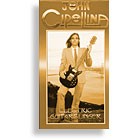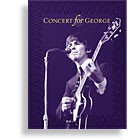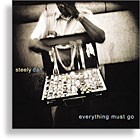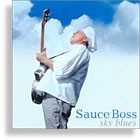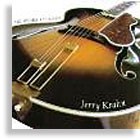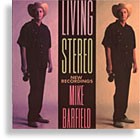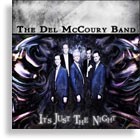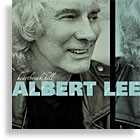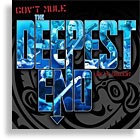On November 29, 2002, a year to the day after George Harrison’s death, an all-star cast took the stage at London’s Royal Albert Hall to celebrate the music of the ex-Beatle and distinguished solo artist. Documenting the concert are a double-disc DVD set, a two-disc CD package, and a movie in theatrical release. The DVD set is stupendous; the CDs are very good despite some flaws; and the theatrical version of the movie offers more evidence that filmmakers should not be allowed anywhere near music. I’ll explain.
Disc one of the DVD set presents the entire concert – every minute of its music and introductions – in its original running order. In other words, you get to experience the whole show as if you had several of the best seats in the house. Due to length and continuity, the CD set presents the Indian portion of the show on disc one and an edited version of the rock segment on disc two. Which means that, even though the Indian music is only 38 minutes in duration, a stirring rendition of “Horse To Water” is excised from disc two, and “While My Guitar Gently Weeps” (the crescendo of the evening) is truncated – lopping off nearly two minutes of Eric Clapton’s dramatic solo at the song’s end – in order to make the disc come in just under 80 minutes. Not wanting to break the mood of the Indian program is understandable, but “Horse” and another track (I’d suggest “That’s The Way It Goes” from Harrison’s Gone Troppo album) would have made welcome bonus cuts on disc one – not to mention the Monty Python segment, which was a mere five priceless minutes.
But those quibbles are mild in comparison to the problems with the hodgepodge film you’ll see if you want to enjoy the show on the big screen. It was directed by David Leland, who apparently thinks he can pace a show better than the all-star band led by Eric Clapton did so brilliantly. In Leland’s jumbled version, the song order makes no sense at all. “Horse” is included, but Tom Petty & The Heartbreakers’ version of “I Need You” is absent, and “Old Brown Shoe” and “Give Me Love” (performed by Jeff Lynne and Procol Harum’s Gary Brooker, respectively) are heard over the credits at the end. Ravi Shankar’s amazing East-meets-West composition, “Arpan,” which he wrote especially for the concert (and features solos by Clapton on acoustic and Vishwa Mohan Bhatt on slide), is cut from 23 minutes to about five; “Your Eyes,” a most impressive sitar solo by Ravi’s 21-year-old daughter, Anoushka Shankar, is gone completely.
Worse still, Leland commits the unforgivable sin of interrupting songs with interview segments – bringing the tally of filmmakers who don’t trust the music to speak for itself, even when the film is about the music, to an even gazillion.
Which is all the more reason you need to buy the DVD. Here, the interviews and rehearsal clips (both interesting) are the only reason you need to pop in disc two – where they are bonus features. Disc one, the actual concert, is filled with highlights. Clapton, the concert’s musical director, is the bandleader, but Marc Mann (who is never properly introduced onstage) does a remarkable job of nailing George’s guitar style, while Harrison’s 24-year-old son, Dhani, strumming rhythm on his dad’s heart-soundhole Zemaitis, looks uncannily like the 1964-era photograph of George (playing his Gretsch Country Gentleman) mounted behind the stage. Heartbreaker Mike Campbell plays the solo to “Taxman” (which was done by Paul, not George) spot on, and Albert Lee kicks up some dust on Ringo’s version of “Honey Don’t” – a nod to George’s hero, Carl Perkins.
The momentum builds perfectly to Ringo introducing Paul McCartney, and then taking a seat in the drum section. After the shuffling “For You Blue” and “Something” (which McCartney begins on ukulele), the man who recommended his younger schoolmate for the guitar slot in the band he and John Lennon were forming sings a very touching rendition of “All Things Must Pass.”
The unedited performance of “While My Guitar Gently Weeps” is the show’s highpoint, but not its conclusion. The “fifth Beatle,” organist Billy Preston, sings a soothing “My Sweet Lord” before everyone jams one last time, on “Wah Wah.” And then Joe Brown, an artist with whom most Americans are unfamiliar, takes center stage. Brown, who was the guitarist in Billy Fury’s band before forming Joe Brown & The Bruvvers in the early ’60s and moving on to an acting career, was a close friend of Harrison’s. Flanked by all of the evening’s performers, strumming a ukulele, he sings the standard “I’ll See You In My Dreams” as an endless shower of confetti cascades down from the hall’s ceiling.
The evening, which is a true celebration and never becomes maudlin, could not be improved upon – as both altered versions prove, in varying degrees.
This article originally appeared in VG
‘s Mar. ’03 issue. All copyrights are by the author and Vintage Guitar
magazine. Unauthorized replication or use is strictly prohibited.
